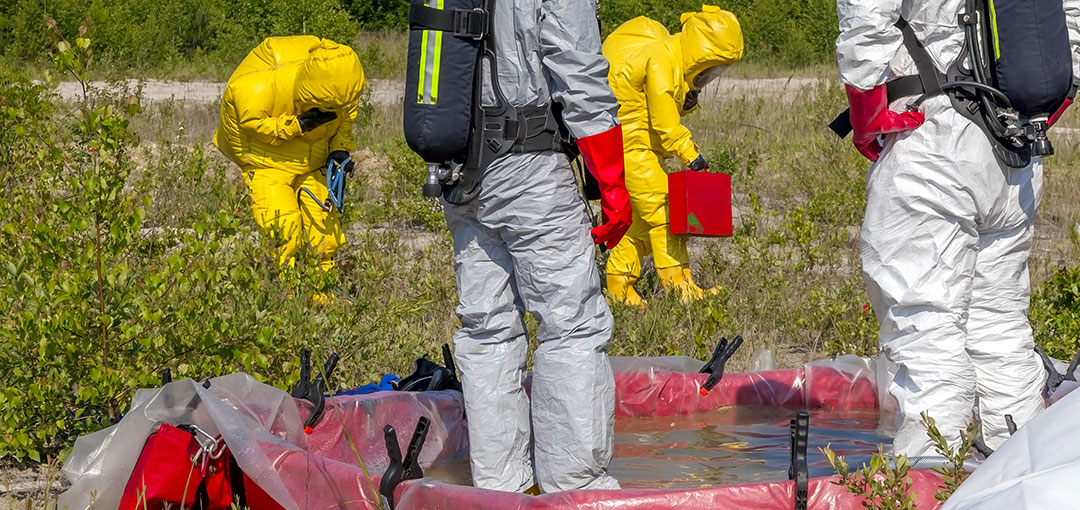Hazmat Response Levels: Roles & Responsibilities Explained
Hazmat Response Levels: Roles & Responsibilities Explained
April 5, 2023 |
Hazmat responders are professional emergency responders trained to handle and mitigate hazardous materials incidents. They typically work in an industrial setting, responding to chemical spills or leaks that may occur during the manufacturing process. The unique nature of this job requires a combination of technical knowledge and communication skills acquired through extensive training and experience. The hazmat response levels are a guide for determining the appropriate response to a hazardous material incident. They help ensure that public safety is protected and the right resources are used. Firefighters, police officers, and other first responders use them to determine what level of response is necessary to respond to an incident involving potentially dangerous materials.
Hazmat First Responder Awareness-Level Training
The Hazmat First Responder Awareness-Level Training course is a course that will introduce you to the responsibilities of a Hazmat First Responder. This includes the roles and responsibilities of emergency responders at this level and how to use Personal Protective Equipment (PPE) correctly.
You will learn the proper procedures for responding to a Hazmat incident, including:
- The roles of each agency involved in responding to Hazmat incidents (e.g., fire department, police department).
- The importance of wearing protective gear when entering an area where there may be chemical or biological hazards.
- In addition to learning what it means to be an emergency responder in this field, you will also learn how to respond appropriately when dealing with dangerous materials such as explosives or radioactive material.
Hazmat Responders on the Operations Level
The operations level comprises responders who are not directly involved with the incident but support those who are. The following roles fall under this category:
- Safety officer – The safety officer oversees all aspects of the response, ensuring it stays within legal and regulatory guidelines. They will ensure that all personnel follow proper procedures and use appropriate personal protective equipment (PPE). They also ensure that everyone has adequate training for their roles in a hazmat incident and any additional certifications needed for specific situations, such as hazmat teams or decontamination units. The safety officer may also be responsible for developing an emergency response plan specific to your company’s needs if none already exists; supervisors should review such plans periodically so they’re up-to-date when needed most!
- Command posts manager – At more extensive facilities like oil refineries and chemical plants, the command post manager serves as a liaison between those who respond directly at the scene and those working remotely via radio communications systems such as winches during vehicle extrication operations (VEEs). They coordinate communication between all parties involved while providing direction regarding best practices based on experience gained through previous similar incidents involving similar substances/compounds/materials etc.
Technician-Level Hazmat Response
The technician-level hazmat response is the first step in a multi-level approach to handling hazardous material incidents. It’s also the most common type of incident at industrial facilities, so it’s important to have clear roles and responsibilities in place for this level of response.
Technicians are responsible for identifying the type of hazardous materials involved in an incident and their location and extent. They may also isolate affected areas until more advanced handlers arrive.
Specialist-Level Responders
Specialist-level responders are at the highest level of hazmat response. These professionals have been trained to respond to emergencies where chemical, biological, radiological, or nuclear materials may be present. They provide technical expertise and leadership during incident response and coordinate with other agencies, such as state or local fire departments and law enforcement officials.
Incident Commander-Level Responders
The Incident Commander (IC) oversees all operations at an incident scene. The IC must be able to lead and coordinate all response resources, including fire departments, police departments, hazmat teams, and other emergency responders who are on the scene. The IC may also be called “supervisor” or “incident commander.”
Things to Look for When Selecting a Hazmat Training Company
- If they know the industry. You should be able to tell if a training company knows what they’re talking about by their experience and understanding of the industry. If you’re looking for someone who has been in the business for years and has had many successful pieces of training, then this is worth looking into further.
- If they offer hands-on training that focuses on real-world situations. Many companies will offer classroom-style learning but not much else, making it challenging to apply what you learned when working on-site or dealing with an emergency situation involving hazardous materials (Hazmat). An effective Hazmat Response Level Training Program should include classroom instruction and hands-on exercises where participants work together on scenarios similar to those they could encounter while responding as part of an emergency response team at home or abroad.
- If they offer flexible scheduling options so everyone can attend despite their busy schedules and other commitments.
Conclusion
Hazmat response levels are an important part of any emergency response plan. They help first responders determine the danger level and how best to respond. If you are looking for more information on how to become a Hazmat responder, contact us today! We can help you find a program that fits your needs and schedule, whether online or in person.
